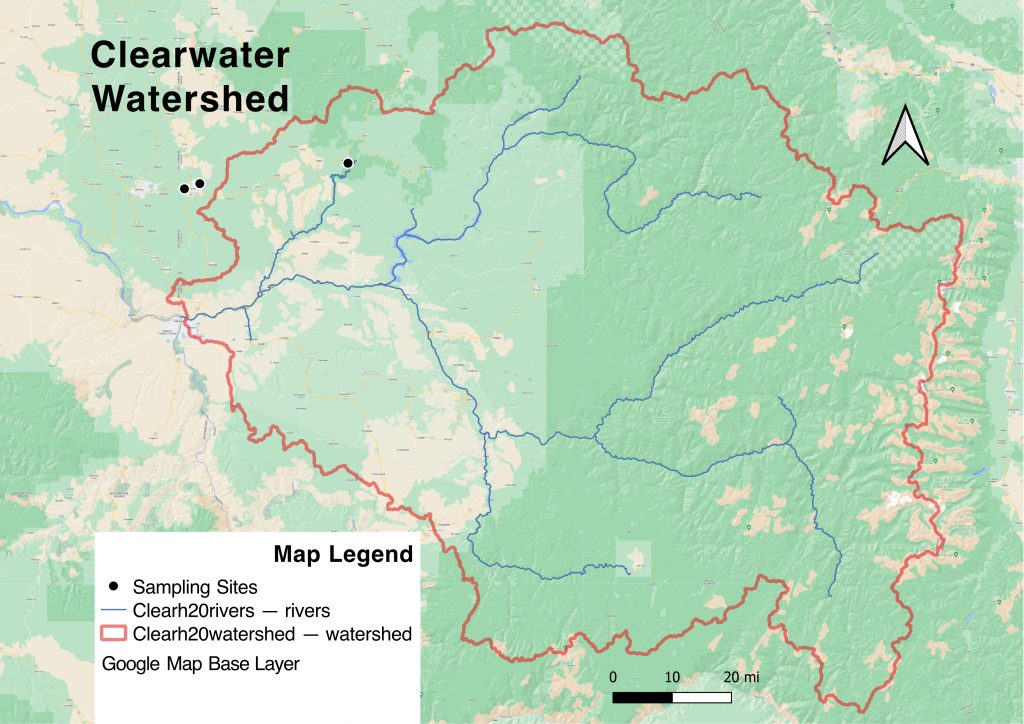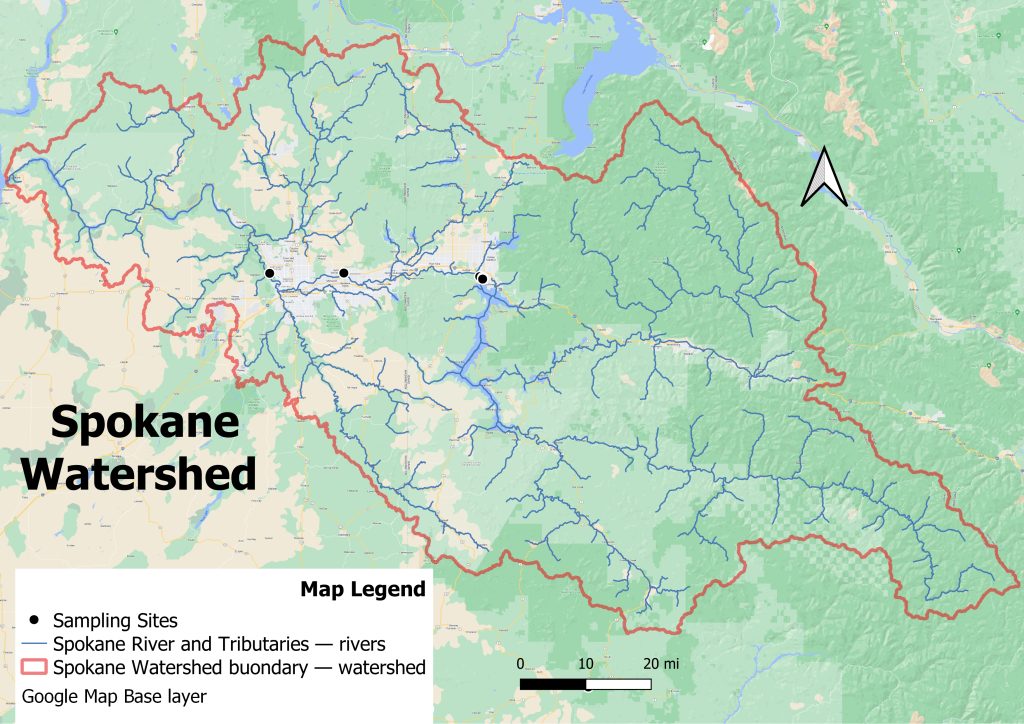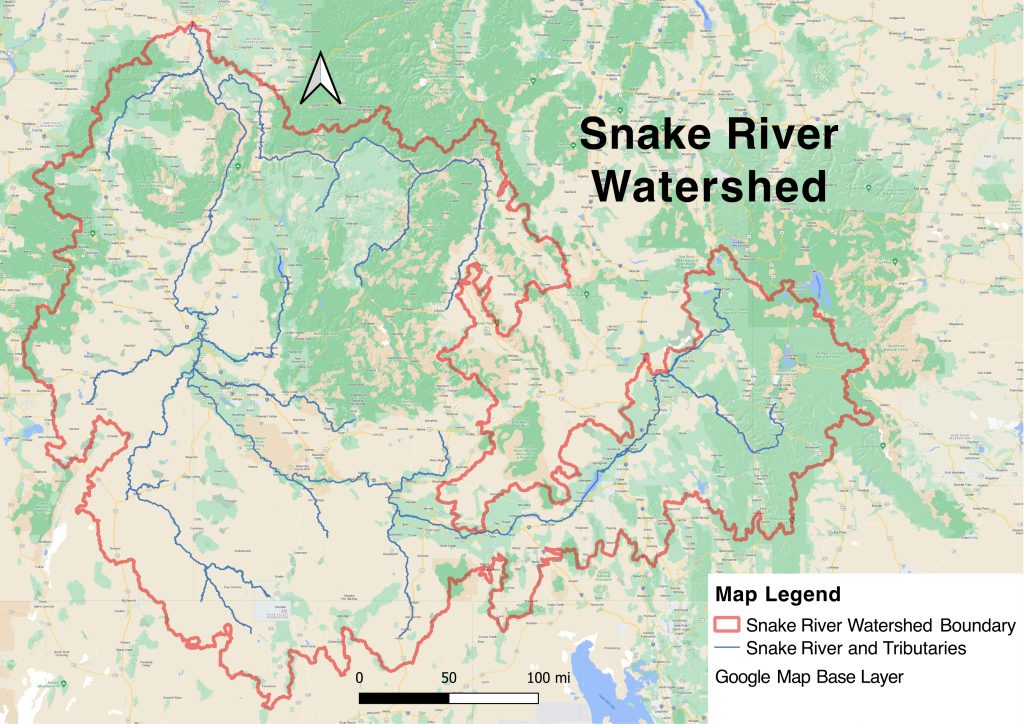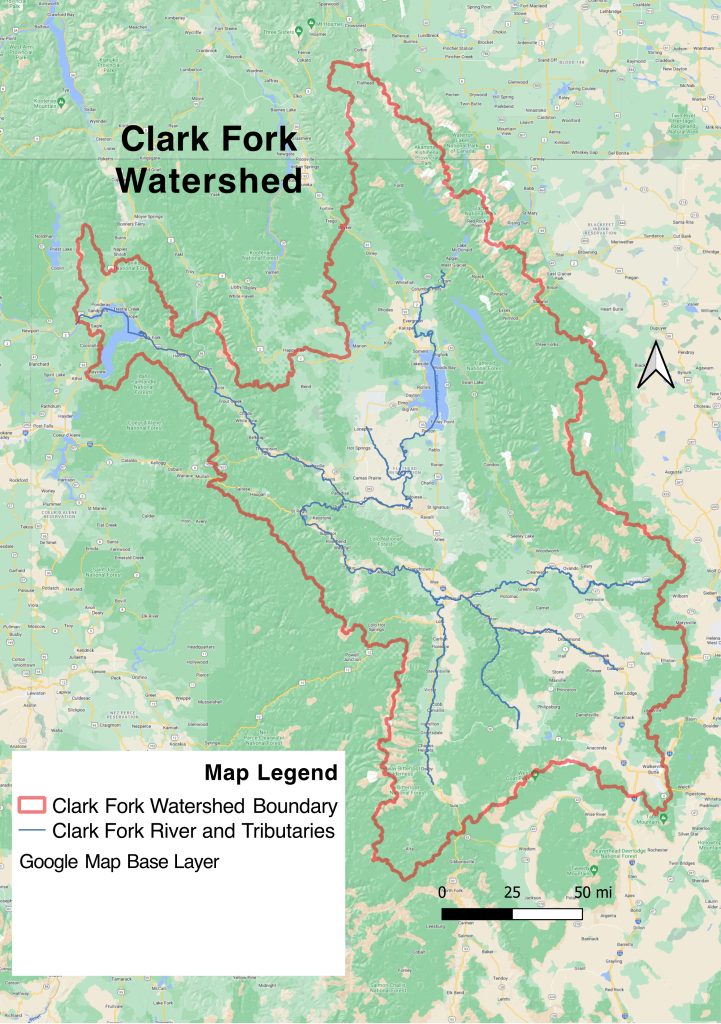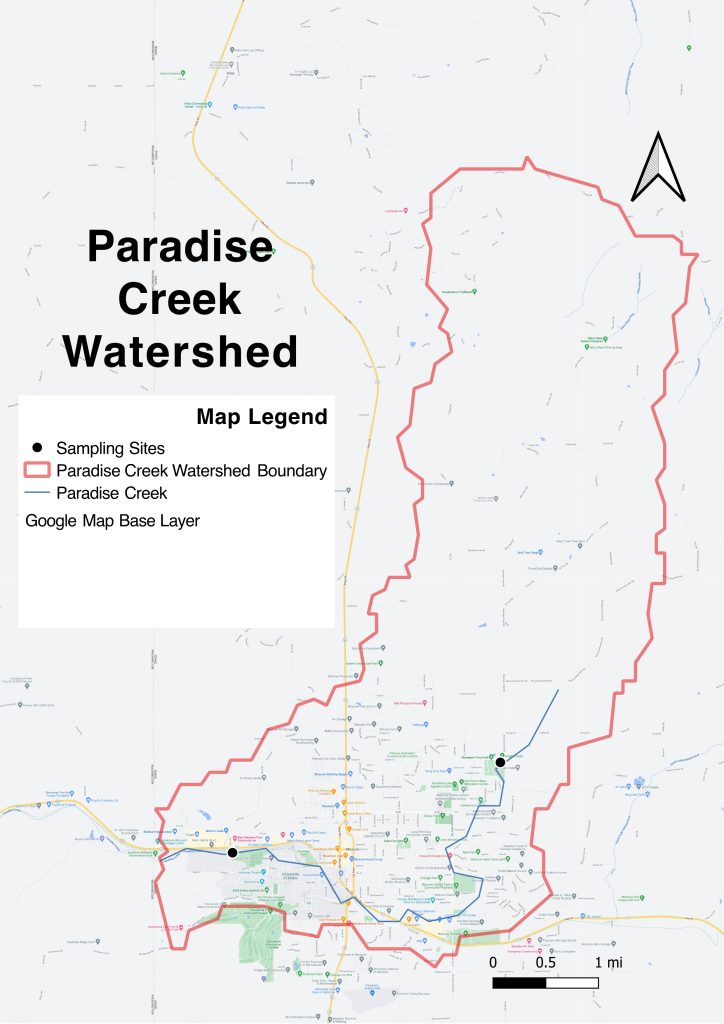The following maps were created through the Myhydro app.
Heberger, Matthew. delineator.py: fast, accurate global watershed delineation using hybrid vector- and raster-based methods. 2022. https://doi.org./10.5281/zenodo.7314287.
Clearwater Watershed
The Clearwater watershed encompasses about 9,400 square miles and includes tributaries from wilderness areas like the Middle Fork Clearwater Wild and Scenic River and the Gospel-Hump Wilderness. Elevation averages about 2,500 feet in this watershed but reaches 8,000 feet in the Clearwater National Forest. Much of the climate in this region is described as a humid continental climate. While it contains relatively unimpacted drainages, Highway 12 stretches 174 miles from Lolo Pass at the Montana border all the way to Lewiston, ID. This long stretch of highway closely parallels and traverses major tributaries of the Clearwater like the Lochsa and Selway Rivers. The Clearwater River basin has been critical habitat and spawning grounds for trout, salmon, and other keystone species like lamprey for thousands of years.
Spokane Watershed
The Spokane River begins in Lake Coeur d’Alene, ID and travels 33 miles to Spokane, WA before heading north to Lake Roosevelt where it meets the Columbia River. The entire watershed is over 6,600 square miles and includes tributaries from the Coeur d’Alene, Idaho Panhandle, and Saint Joe National Forests. In addition to coniferous forests, this watershed includes prairies and metropolitan regions. Highway I-90 also runs parallel to major tributaries in this watershed and the corridor between Coeur d’Alene and Spokane experiences considerable interstate traffic. This watershed supports over 500,000 people and is home to many aquatic species, including rainbow trout.
Snake River Watershed
The headwaters of the Snake River in Yellowstone National Park represent the beginning of the Columbia River basin. Once it enters Idaho, the Snake River flows across the southern portion of the state before heading north to Hells Canyon and reaching the Columbia River. The Middle and Upper Snake watersheds include a vast drainage area throughout some of the most remote, pristine wilderness areas in the lower 48. The Middle Snake watershed includes the Salmon River and its tributaries. These waters are located in mountainous regions of National Forests, including the rugged, Frank Church River of No Return Wilderness. This portion of the watershed encompasses about 12,000 square miles and receives. On the other hand, the Snake River Plain is dominated by grassland and shrubland, relies heavily on irrigation, and includes over 650 miles of highway traversing along or through major drainages. The drainage area of the Snake River Plain is about 37,000 square miles and some of the southwestern regions receive less than 10 inches of precipitation each year. Like much of the Columbia River Basin, the Middle and Upper Snake watersheds have been critical habitat for endemic keystone species for thousands of years.
Clark Fork Watershed
The Clark Fork watershed begins near Butte, Montana and travels over 300 miles northwest into Idaho’s Lake Pend Oreille. It sustains over 350,000 people and spans 14 million acres across Canada, Montana, and Idaho. Near the continental divide in Montana, elevations of the watershed reach up to 10,800 feet and sink as low as 1,800 feet in Idaho. This watershed includes almost 230 miles of the major interstate Highway, I-90 and over 260 miles of Route 93. These major thoroughfares run parallel to tributaries of the watershed, starting at the headwaters in Butte, extending all the way to the mouth of the Clark Fork in Lake Pend Oreille. Climate varies considerably throughout the watershed and ranges from semi-arid to rainforest.
Paradise Creek Watershed
The Paradise Creek watershed includes 34 square miles of drainage area and begins in the Palouse Mountain Range at an elevation of 4,300 feet. It drains into farm-dominated lands before flowing through the town of Moscow, ID and eventually reaches the South Fork of the Palouse River in Pullman, Washington. Moscow, ID has a population of almost 26,000 and Pullman, WA has about 33,000 residents. The highway between Pullman and Moscow runs parallel to Paradise Creek, with little riparian buffer protection in some areas.

